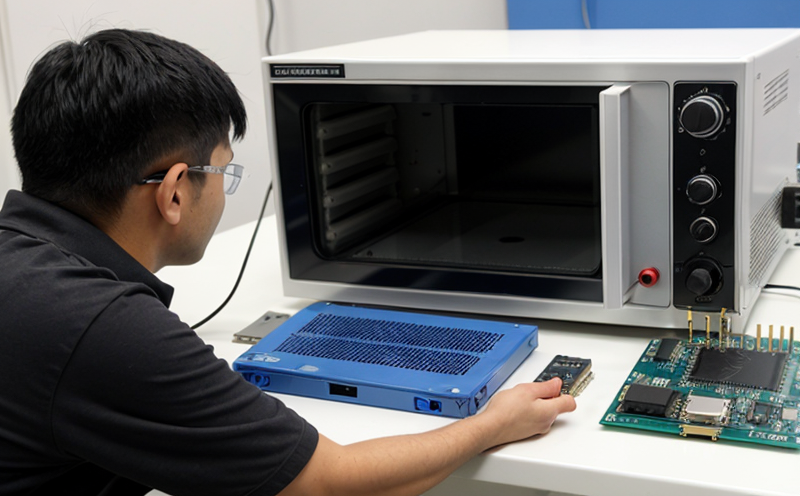Reliability and Durability Testing for Consumer Microelectronics
In today's fast-paced world, consumer electronics have become an integral part of daily life. Whether it’s a smartphone, tablet, wearable device, or IoT gadget, these products must meet rigorous standards to ensure they perform consistently across various environmental conditions over time. This is where reliability and durability testing plays a crucial role in the microelectronics & components sector.
Reliability testing focuses on evaluating how well electronic devices function under normal operating conditions, while durability tests assess their ability to withstand harsh environments such as high temperatures, humidity, vibration, and mechanical stress. The goal is to ensure that these products meet safety standards and provide a long-lasting user experience without compromising performance.
For consumer electronics manufacturers, reliability and durability testing helps identify potential issues early in the design phase or during production, allowing for timely corrections before products reach consumers. This not only enhances brand reputation but also increases customer satisfaction by reducing returns and warranty claims.
The process typically involves exposing samples to controlled stressors that mimic real-world scenarios experienced by end-users. Instruments like environmental chambers simulate temperature variations ranging from extremely cold (-40°C) to scorching hot (125°C), while shake tables recreate the effects of transportation vibrations. Humidity ovens expose components to varying levels of moisture, which can affect circuit board integrity.
Once testing is complete, detailed reports are generated highlighting any failures observed during experimentation along with recommendations for improvement if necessary. Compliance officers and quality managers rely heavily on these findings when making decisions about product launches or modifications aimed at enhancing overall reliability and durability.
Industry Applications
The demand for reliable consumer electronics continues to grow, driven by increasing technology integration into everyday objects like smart home appliances, wearable fitness trackers, and portable audio devices. As manufacturers strive to meet this demand, they must adhere to strict regulatory requirements set forth by organizations such as Underwriters Laboratories (UL), International Electrotechnical Commission (IEC), and European Union directives.
Reliability and durability testing services cater specifically to industries where product longevity is critical for both consumer safety and operational efficiency. These include:
- Consumer electronics
- Smart home technology
- Wearable devices
- IoT gadgets
In addition to ensuring compliance with international standards, these tests help companies differentiate themselves in competitive markets by delivering superior product quality. By investing in thorough reliability and durability testing early on, businesses can reduce costs associated with post-launch repairs and replacements while building trust among customers.
International Acceptance and Recognition
The importance of reliability and durability testing extends beyond individual companies; it plays a pivotal role in maintaining global market standards. International bodies like the International Organization for Standardization (ISO) provide guidelines that guide laboratories conducting these tests, ensuring consistency across different regions.
For instance, ISO/IEC 17025 serves as an essential framework for accreditation of calibration and testing laboratories worldwide. It ensures that all procedures followed during reliability and durability assessments meet recognized quality criteria set by relevant authorities.
Accreditation through such bodies not only enhances credibility but also opens doors to larger markets where stringent regulatory compliance is required. Many countries have implemented laws mandating third-party verification of product performance before allowing entry into national borders. By partnering with internationally accredited labs for reliability and durability testing, manufacturers can ensure their products meet these requirements efficiently.
Competitive Advantage and Market Impact
In a highly competitive market space, standing out from competitors hinges on delivering superior product quality. Reliability and durability testing provides clear insights into potential weaknesses within design or manufacturing processes that could otherwise go unnoticed until after release. Early detection of these flaws allows companies to refine their offerings promptly, leading to better customer satisfaction and enhanced brand loyalty.
Moreover, compliance with industry-specific regulations adds value by demonstrating commitment to safety standards. This aligns products closely with consumer expectations, fostering trust among users who prioritize longevity and performance in their purchases.
The ability to consistently deliver reliable microelectronics contributes significantly towards establishing a strong market position. Companies recognized for delivering high-quality goods often see increased sales volumes due to positive word-of-mouth recommendations from satisfied customers. Additionally, participating in industry benchmarking initiatives can further underscore leadership capabilities within the sector.





